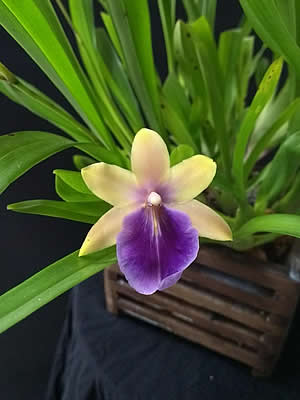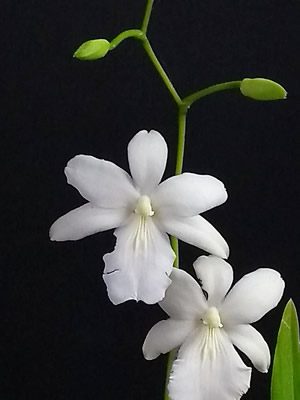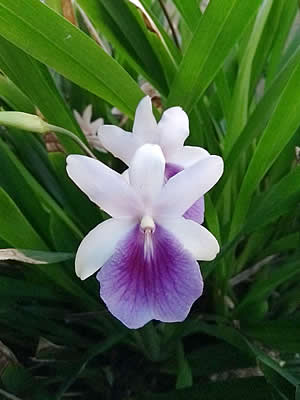
The Regnell’s Miltonia (Miltonia regnellii) is a natural orchid, with sympodial growth and epiphytic habit, native to the states of Rio Grande do Sul, Santa Catarina, Paraná, São Paulo, Minas Gerais, and Rio de Janeiro in Brazil. It thrives in the Serra do Mar, in areas with high luminosity but protected from direct sunlight. It prefers a tropical and subtropical climate, which means it can tolerate cooler or slightly warmer conditions, as long as the nights are cooler. It grows from sea level up to 3937 feet (1200 meters) in altitude, with a preference for regions around 2625 feet (800 meters).
The genus name “Miltonia” is a tribute to the English orchid enthusiast Charles Wentworth-Fitzwilliam (1786–1857), Viscount Milton. The species “regnellii” is named in honor of the Swedish physician and botanist Anders Fredrik Regnell (1807 – 1884). This orchid produces natural hybrids with Miltonia clowesii, resulting in Miltonia x castanea, with Miltonia candida, resulting in Miltonia x binotii, and with Miltonia spectabilis, resulting in Miltonia x cogniauxiae.
It blooms from summer to early autumn. Its inflorescence is semi-erect, racemose, measuring 15.75 inches (40 cm ) in length and bearing 3 to 10 fragrant flowers, with sizes ranging from 2 to 3 inches (5 to 7.5 cm), lasting for about 30 to 40 days. It is said that the flowers have the aroma of coriander (Coriandrum sativum). In the typical species, the petals and sepals are white, and the lip is rounded, with colors ranging from pink to purple. There are varieties “Alba,” which is entirely white, and “Citrina” (golden), with yellow petals and sepals. It goes dormant in winter, after flowering.

It should be grown with 50 to 60% shading (filtered light – 40,000 to 32,000 lux), with a relative humidity of 60% and good ventilation. It can be attached to bark, wooden slabs, and tree trunks. It adapts well to pots or wooden baskets with a substrate suitable for epiphytes, retaining moisture, being well-draining, and well-ventilated. A suggested substrate for this species is a mix of equal parts of pine bark, sphagnum moss, and charcoal.
The Regnell’s Miltonia prefers humid but well-ventilated environments. Water 2 to 3 times a week in the summer, allowing the substrate to dry between waterings. In very hot weather, provide a bit more water, and the same applies when planted on slabs and trunks. Reduce watering in winter during the plant’s dormancy to avoid fungal issues.
Perform weekly foliar fertilization with a solution of 2g (1/2 teaspoon) of Peter’s 20-20-20 NPK fertilizer per liter of water. Supplement with organic fertilizer in the substrate, using a organic fertilizer like bokashi or similar once a month, sprinkling it over the substrate. It propagates through division of the plant, keeping each new seedling with at least 4 healthy pseudobulbs connected by the rhizome and 1 guide shoot.

